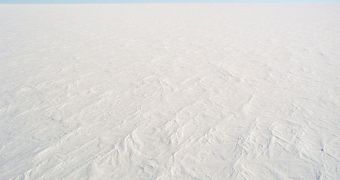A group of investigators from the University of Bristol will be heading to the Antarctic next week, officials from the university announced today. They say that the researchers' main mission will be to excavate water and sediment samples from deep beneath the ice sheets.
These samples will be collected from a submerged lake that lies about 3 kilometers (1.86 miles) beneath the Antarctic surface. The potential scientific benefit of such a research is mind-boggling.
Investigators explain that submerged lakes have remained isolated from the outside world for millions of years, which means that any life trapped there would have evolved at its own pace. It will be very interesting for evolutionary biologists to analyze any lifeforms collected from these locations.
In addition, sediment samples could be used to gain a deeper understanding of our planet's distant climate past. Despite climate scientists' best efforts, there are still many things we don't know about how the planet evolved the past 500 million years.
The research exact place – Lake Ellsworth – is located about 16,000 kilometers (9,941 miles) away, beneath the West Antarctic Ice Sheet (WAIS). The team will have to deploy no less than 70 tons of equipment at the site, before studies can begin.
Average temperatures at this location can reach minus 25 degrees Celsius (-13°Fahrenheit). The university team explains that this particular area of Antarctica represents one of the most hostile environments on our planet.
The new effort represents only the advanced expeditionary force. The actual study will begin about a year from now, once the site has been prepared using existing equipment. In October 2012, UB will send 10 researchers and engineers to begin hot-water drilling on the WAIS.
After the ice is breached, a titanium probe will be lowered into the lake, where instruments will measure various traits of the water underneath, while also collecting numerous samples. A corer will then be used to extract sediments from the bottom of the lake,.
“For almost 15 years we’ve been planning to explore this hidden world. It’s only now that we have the expertise and technology to drill through Antarctica’s thickest ice and collect samples without contaminating this untouched and pristine environment,” UB professor Martin Siegert explains.
“We are tremendously excited – this is a frontier science project with engineering and technology at the forefront. Scientists and engineers from two of the Natural Environment Research Council’s (NERC) centers of excellence, working in partnership with scientists from eight UK universities, make up the consortium that will search for life in this extreme environment and discover the secrets locked in the sediments,” he adds.
“Every piece of equipment is a bespoke design and they have been built in partnership with several UK businesses,” says the expert, who the principal investigator of the Lake Ellsworth Program. At this point, scientists know about more than 387 submerged lakes.

 14 DAY TRIAL //
14 DAY TRIAL //